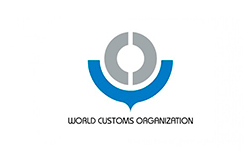The 21st Century Supply Chain Model study for WCO (2006-2007)
 (2006-2007)
(2006-2007)
Summary:
This report on “The 21st Century Supply Chain Model” has been prepared for the World Customs Organization (WCO), for the benefit of customs administrations worldwide. The broad research question behind the study is following: What are current trends in the international supply chain, what are the predicted or expected changes and likely future development of the next 10 to 20 years? The goal of the research team is to give well-reasoned, multi-layered answers to this question, giving priority to such international supply chain management aspects which are more likely to be of interest to customs administrations. In other words, the study aims to bring light on what kind of changes customs could expect taking place in international supply chain systems during the next 10-20 years, and why these changes may be of importance for customs’ strategic planning, including long-term human resource and technology planning. The study does not analyze how customs should prepare for the future – this remains a topic for future studies. In the study we identify a set of likely change drivers and study their potential impact on supply chain parameters, structures and risks in the future. By change drivers we mean general trends and factors related to politics, economics, sociology, technology, environment, energy, ethics and security issues, which all may have an impact on how supply chains are managed in the future. Supply chain parameters concern key decision items for supply chain decision makers working in manufacturing, trading, logistics and other service companies, including sourcing decisions (global vs. local sourcing etc.) manufacturing decisions (focused vs. general factories etc.), distribution decisions (direct deliveries vs. distribution centers etc.), transportation decisions (air vs. sea etc.) and so on.
The study methodologies used to derive and prioritize various change driver and supply chain components are widely used in academia. By starting with an exhaustive literature review and expert interviews, a survey is conducted to collect data from the field and all these inputs are complemented with an expert scenario workshop using the Delphi method to finally arrive to result triangulation through a change driver – supply chain parameter matrix leading to the 21st century supply chain model and conclusions. Naturally, the applied methodologies and the conduct of the study share several constraints and restrictions due to the tight study schedule, and to the basic nature of the research subject: looking to the future is always difficult and one can merely arrive to “best estimates” based on the underlying data collected and expertise available.
The most relevant conclusions of the study, with possibly strong connections to customs strategic and operational planning for next 10-20 years, are following nine:
• Customers having more weight in international supply chain systems.
• Manufacturing taking place in new countries/regions, and raw material sources and focused factories serving more global markets.
• Product variety increasing while product life cycles becoming shorter.
• Business-to-business and business-to-government networking and collaboration increasing in the future.
• Supply chain service providers increasing their service offerings in logistics, technologies and finance.
• Consolidation and mergers is increasing in logistics markets.
• Sea freight growing possibly faster than air freight.
• International trade, logistics and customs data standards increasing their role.
• Risks and vulnerabilities increasing in international supply chains.
Publications and presentations:
Hameri, A.-P. and Hintsa, J., 2009. Assessing the drivers of change for cross-border supply chains. International Journal of Physical Distribution & Logistics, 39(9), pp.741-761.
Hintsa, J., Abu Ayyash, F., Hameri, A.-P., Myers, P., Coulibaly, N., and Gutierrez, X., 2007. The 21st Century Supply Chain Model. WCO Council Meeting, Brussels, Belgium, 28 June 2007.


